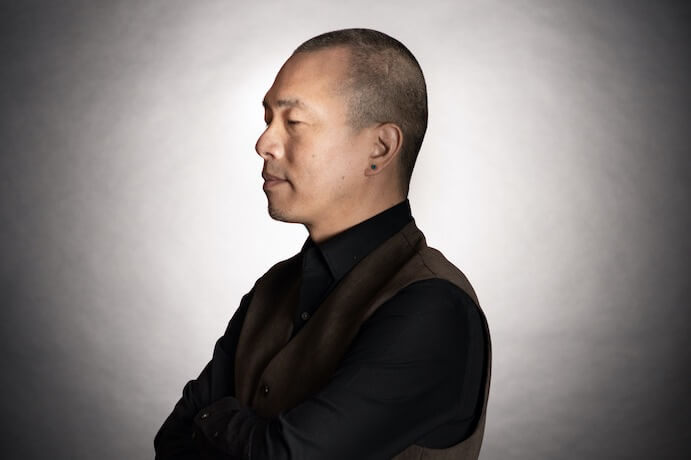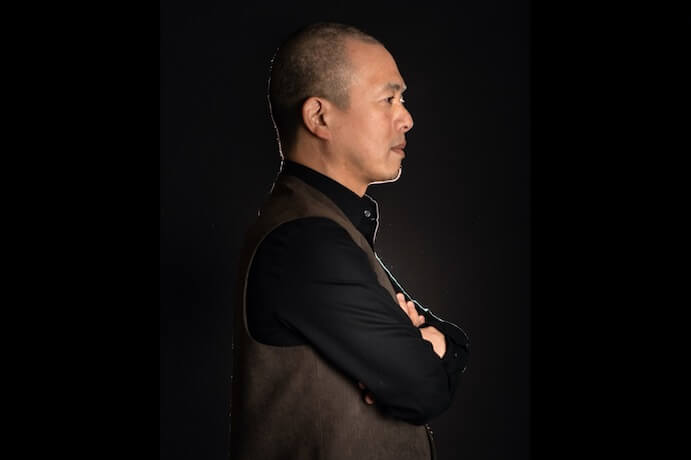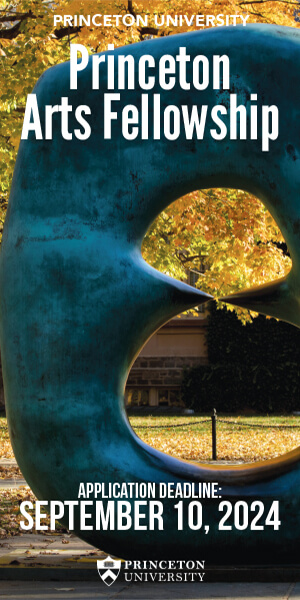Since childhood, composer Masatora Goya has been drawn to the complexities of human behavior, an interest that has manifested in multiple ways over the course of his life: first through the study of sociology, and later through musical composition. But no matter the vehicle, his motivations and goals have remained unchanged.
“I really love observing people: how people react and behave, and moods in general,” Goya told me via Zoom. “So I want to uncover this hidden path the emotions secretly walk through. We have so many things that we keep forgetting emotionally, or are completely hidden, unnoticed. There are so many things that we can’t make tangible. I’m always trying to give a shape to this very ambiguous thing that we cannot really put into words.”
Born in Malaysia, raised in Japan, and now living in New York, Goya first came to the U.S. to study vocal performance and theater at New Jersey City University, but the last 10 years of his artistic life have been defined by instrumental chamber music. His compositions suggest a general emotional framework that enables audiences to embark on their own listening journeys. He notes that his music is all about the experience, with no expectations or prescribed outcome.
“I think it helps that I have a certain sort of direction in how [the composition] may go,” he explains. “I do have a very loose structure, or a through-line behind it, but I’m not really imposing anything. It’s more like unconsciousness somehow takes form while you listen.”

Masatora Goya–Photo by Sanae Ono
In 2012, as Goya was shifting his focus from theater works to instrumental chamber music, he received an ACF JFund award (now ACF | create). The program, funded by the Jerome Foundation, supports the creation, presentation, and subsequent life of new artistic work. Goya points to the award as the beginning of a new chapter that directly led to future opportunities. “It gave me a lot of confidence, because I didn’t go through ‘major schools’ or study with ‘major teachers’ or anything. So somebody actually recognized something – like a possibility. That was huge to motivate me to follow this path.”
In addition to providing resources to create a body of work for the commissioning ensemble, the award also helped Goya record his first album. Released on Ravello Records in 2015, Dream of Sailing is a collection of mixed chamber works for flute, viola, cello, and guitar. Goya regards the album as “the culmination of my first chapter as an instrumental chamber composer,” which established a foundation upon which to keep building and experimenting.
From there, Goya’s creative work started to grow organically; the album generated inquiries about future performances and new commissions and started to expand Goya’s network of collaborators. Thomas Piercy, the Artistic Director of Random Access Music, is one person who has continually brought Goya into “weird projects” over the years. Piercy is a clarinetist who also performs on hichiriki, a traditional Japanese double reed instrument. In his conversations with Goya, he expressed curiosity about incorporating hichiriki into Western classical chamber ensembles, which helped spark Goya’s next creative phase.
Experimenting with unconventional chamber ensembles has definitely come with challenges, including figuring out how to artistically integrate traditional instruments – which are not tuned to Western equal temperament – into ensembles with piano and strings. But developing long-term collaborations with performers who specialize in Japanese instruments has proved to be invaluable.
One of these influential artists is Hidejiro Honjoh, a young master of the shamisen, a Japanese three-stringed instrument used to accompany kabuki theater, puppet plays, and folk songs. Goya began studying shamisen with Honjoh, learning to hold the awkwardly large plectrum used to strum the thin, delicate strings; constantly adjusting the loose tuning pegs; and working his way up and down the fretless neck – a process he says changed his entire concept of “chord-oriented, harmony-oriented Western classical music.”
No matter how cerebral the compositional is, the audience reaction is always visceral
“You really have to listen to the nuance of the tone itself – just one tone really sustains the space a lot longer than you think,” he told me. “It’s almost like sculpting the air and trying to create some kind of scenery in front of the audience… This really changed my concept of composition; I don’t have to rely on extended techniques, or invent new special effects, or create very gorgeous harmony.”
Letting go of these expectations for contemporary composition has allowed Goya to focus on the universality of human emotions: “No matter how cerebral the compositional is, the audience reaction is always visceral,” he says.
Goya’s American Prize-winning work MANAS (2022) was a defining moment where everything seemed to coalesce: his BA in Integrated Studies and interest in human emotion; his love of the theater and creating a sense of place; his music for traditional Japanese instruments and chamber music; and his personal experiences and cultural heritage. Scored for shakuhachi, cello, and piano, the 17-minute work traverses distinct musical terrains imbued with stories of Zen monks, haunting Noh characters, and the things that remain after death. At first, the piano’s clustered interjections are seemingly at odds with the free-wheeling, pitch-bent melodies of the shakuhachi. But the trio settles into lush modal lyricism, and the cello becomes the connective tissue: sometimes emphasizing the bass notes of the piano, sometimes singing out in duet with the shakuhachi.
Goya thinks he’s been subconsciously trying to accomplish this synthesis all along: finding a one-of-a-kind musical voice to express his perspective on being a Japanese person living in the U.S. Something “just kind of clicked” when writing MANAS, he said. He began to see how everything could be fused together. In our conversation, though, Goya realized — much to his surprise — that he had actually initiated this process of combining emotions, theatricality, and Japanese influences in of his earlier works. Originally scored for voice and piano, Call (2013) moves through the different emotional shadings of the Japanese word “Oi,” from a casual “hey” to a complaint or an exclamation. As Goya prismatically exposes the nuanced facets of the word, its simple, syllabic nature allows the voice to be used in a flexible, almost instrumental way.
Feeling assured in having found a way to express himself authentically and completely, Goya says that his “next decade agenda” includes writing more for larger ensembles like orchestras, or returning to his creative roots with theater and vocal pieces. After a decade of saying yes to every opportunity for growth as a composer, he’s looking forward to focusing on the path he is defining for himself.
Some things will remain the same, though. “Everything is connected within my interest in human emotions,” he reiterates. “Now that I’ve found one way to express my take, I think that all of my music has a responsibility to present my perspective on this world… And then, that may take the audience to another dimension: That’s where – free from what we normally think or feel – they can find something that they’ve never realized before.”
I CARE IF YOU LISTEN is an editorially-independent program of the American Composers Forum, and is made possible thanks to generous donor and institutional support. Opinions expressed are solely those of the author and may not represent the views of ICIYL or ACF.
You can support the work of ICIYL with a tax-deductible gift to ACF. For more on ACF, visit the “At ACF” section or composersforum.org.





















